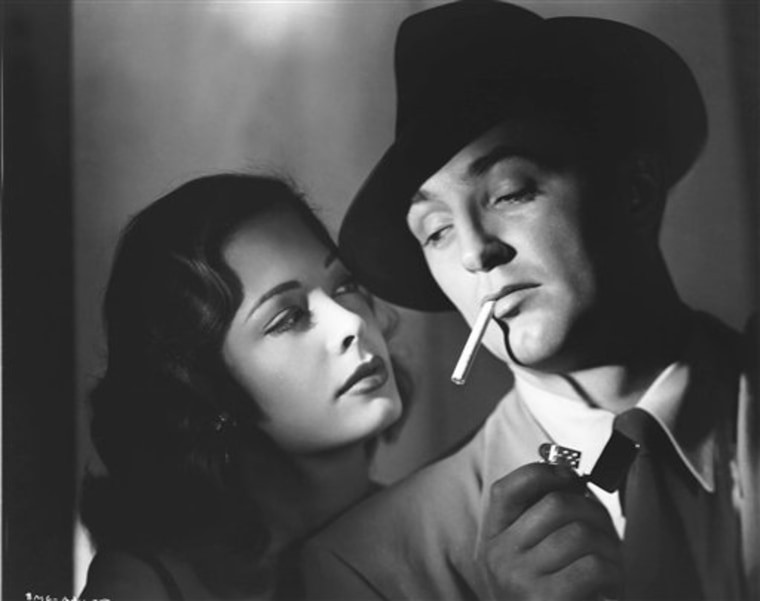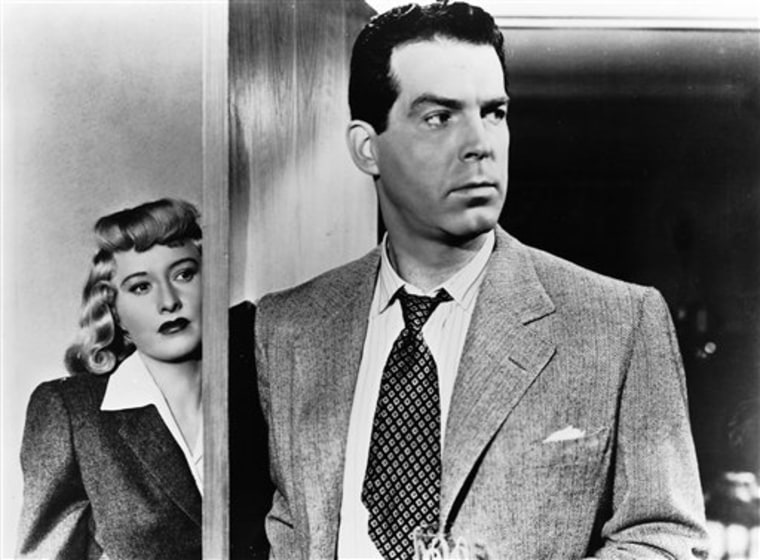The doomed, dame-loving, fast-talking gumshoe has never seen such sunny days.
In a seemingly never-ending parade of DVD releases, film noir classics (along with the not-so-classic) are flowing from movie studios’ vaults.
“The studios are putting them out and they’re going to keep putting them out until there aren’t any more,” says Alain Silver, author of several film noir books, including “Film Noir: An Encyclopedic Reference to the American Style.”
“And then they’re going to look around and see if there’s anything they’ve missed or anything that’s marginal that might possibly be called film noir,” adds Silver, who estimates he’s done a dozen commentaries for noir DVDs.
Heading the push have been Warner Bros. and Fox.
Warner Bros. has issued three film noir collections of five or six discs each, the latest in July. While the first set included several of the genre’s masterpieces (“Out of the Past,” “Murder My Sweet”) the collections have delved deeper into the more obscure films.
Nicholas Ray’s “On Dangerous Ground” highlighted the third volume, which also included “Lady in the Lake” (a Philip Marlowe detective story), “Border Incident,” (about a corrupt rancher’s exploitive smuggling of Mexicans), “His Kind of Woman” (an especially darkly lit Robert Mitchum movie) and “The Racket” (another Mitchum film, this one about police corruption).
‘They're always asking for more’“I see no end in sight,” says George Feltenstein, senior vice president of Warner Bros. Home Video, which includes the libraries of MGM and RKO.

“People will always say, ‘Where’s this? Where’s that?’,” says Feltenstein, who expects his studio’s noir sets eventually to number as high as 10 volumes. “They’re always asking for more.”
Fox, meanwhile, has released nearly 20 titles under its “Fox Film Noir” label, which on Tuesday will release “14 Hours,” “Shock” and “Vicki” — all titles not normally defined as film noir.
Dated roughly from 1941 to 1958, film noir took German expressionism to the back alleys of urban American. Though a strict definition of the style can be elusive, noirs are generally fatalistic tragedies, centered on dodgy, sexy characters portrayed in a chiaroscuro of black and white.
Fox’s previous releases include the beloved “Laura,” and noir staples “Dark Corner,” “Kiss of Death” and “Fallen Angel.”
“I think what’s happening is that the studios are aware of the popularity of noir as a label,” says Foster Hirsch, who’s on the board of directors of the Film Noir Foundation and whose books include “Film Noir: The Dark Side of the Screen.”
“Not all obscure, old films with a semi-cult reputation turn out to be good,” Hirsch says. “One of the pleasures of dabbling in noir is you always think there’s something out there, a jewel that nobody’s discovered yet.”
Special treatment for film classicsThe classics are also getting the special edition treatment. Earlier this week, Universal released a two-disc version of “Double Indemnity,” improving on the picture quality of the film’s first DVD edition.
The Criterion Collection has helped resuscitate the reputations of the films “Night and the City” and “Pickup on South Street,” both starring Richard Widmark.
The hunger for more titles is also palpable on the film festival circuit. New York’s esteemed repertory theater Film Forum earlier this summer played a well-attended six-week “B Noir” series focusing on lesser-seen noirs such as “Phantom Lady” and “The Big Combo.”
“I could practically spend my time from January to June or July going to one more film (noir) festival after another,” says Hirsch.
For many, a renaissance for film noir makes sense. Made during WWII and the Cold War, noir was a dark, paranoid, cynical creation evocative of a tense time — not unlike today’s world.
“That undercurrent that’s part of any film noir is something people can relate to when they turn on the news,” says Silver.
But Silver thinks its current popularity stems from nostalgia for a simpler world of mobsters, femmes fatales and luckless private eyes.
Another possibility: The films are simply some of the finest examples of American cinema, a remarkable synergy of style and substance that hypnotizes the viewer, seductively leading moviegoers — like its protagonists — into the shadows of human nature, baited by the glimmer of an anklet or the romance of an impossible destiny.
